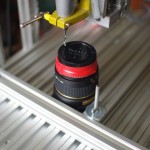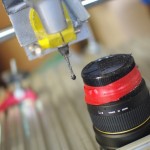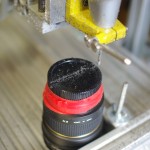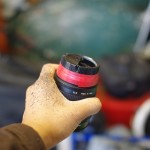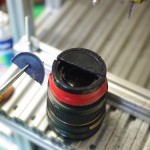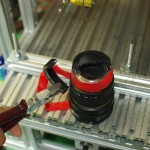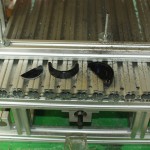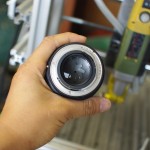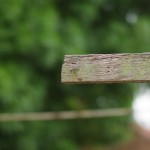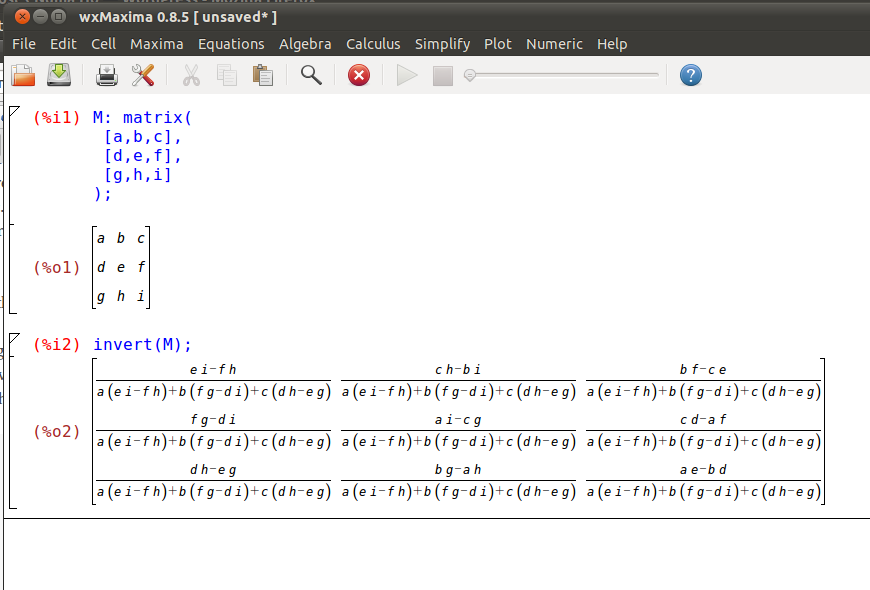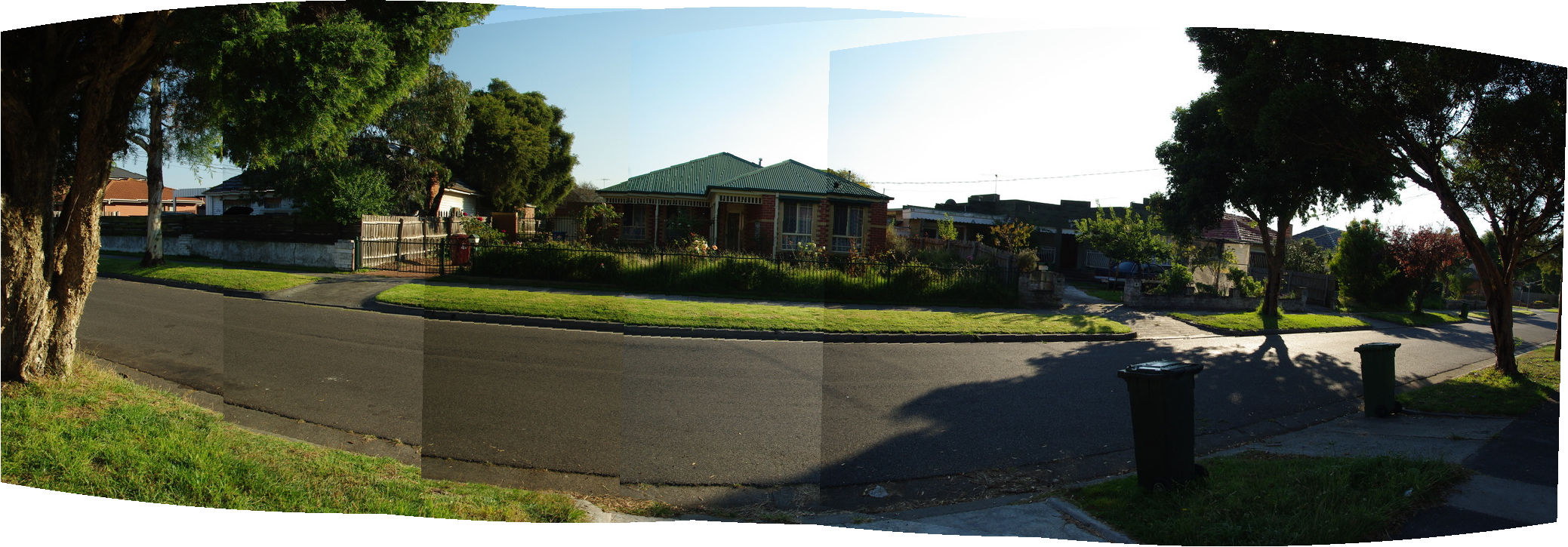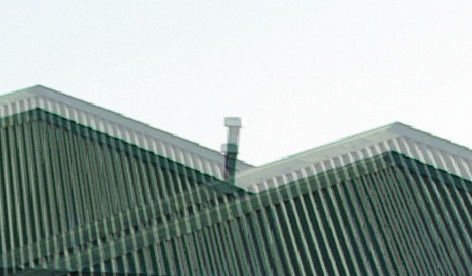In this post I’ll be comparing 3 popular C++ matrix libraries found on Linux.
OpenCV is a large computer vision library with matrix support. Armadillo wraps around LAPACK. Eigen is an interesting library, all the implementation is in the C++ header, much like boost. So it is simple to link into, but takes more time compile.
The 5 matrix operations I’ll be focusing on are: add, multiply, transpose, inversion, SVD. These are the most common functions I use. All the libraries are open source and run on a variety of platforms but I’ll just be comparing them on Ubuntu Linux.
Each of the 5 operations were tested on randomly generated matrices of different size NxN with the average running time recorded.
I was tossing up whether to use a bar chart to display the result but the results span over a very large interval. A log graph would show all the data easily but make numerical comparisons harder. So in the end I opted to show the raw data plus a normalised version to compare relative speed ups. Values highlight in red indicate the best results.
Add
Performing C = A + B
Raw data
| Results in ms | OpenCV | Armadillo | Eigen |
| 4×4 | 0.00098 | 0.00003 | 0.00002 |
| 8×8 | 0.00034 | 0.00006 | 0.00017 |
| 16×16 | 0.00048 | 0.00029 | 0.00077 |
| 32×32 | 0.00142 | 0.00208 | 0.00185 |
| 64×64 | 0.00667 | 0.00647 | 0.00688 |
| 128×128 | 0.02190 | 0.02776 | 0.03318 |
| 256×256 | 0.23900 | 0.27900 | 0.30400 |
| 512×512 | 1.04700 | 1.17600 | 1.33900 |
Normalised
| Speed up over slowest | OpenCV | Armadillo | Eigen |
| 4×4 | 1.00x | 30.53x | 44.41x |
| 8×8 | 1.00x | 5.56x | 2.02x |
| 16×16 | 1.62x | 2.66x | 1.00x |
| 32×32 | 1.46x | 1.00x | 1.12x |
| 64×64 | 1.03x | 1.06x | 1.00x |
| 128×128 | 1.52x | 1.20x | 1.00x |
| 256×256 | 1.27x | 1.09x | 1.00x |
| 512×512 | 1.28x | 1.14x | 1.00x |
The average running time for all 3 libraries are very similar so I would say there is no clear winner here. In the 4×4 case where OpenCV is much slower it might be due to overhead in error checking.
Multiply
Performing C = A * B
Raw data
| Results in ms | OpenCV | Armadillo | Eigen |
| 4×4 | 0.00104 | 0.00007 | 0.00030 |
| 8×8 | 0.00070 | 0.00080 | 0.00268 |
| 16×16 | 0.00402 | 0.00271 | 0.00772 |
| 32×32 | 0.02059 | 0.02104 | 0.02527 |
| 64×64 | 0.14835 | 0.18493 | 0.06987 |
| 128×128 | 1.83967 | 1.10590 | 0.60047 |
| 256×256 | 15.54500 | 9.18000 | 2.65200 |
| 512×512 | 133.32800 | 35.43100 | 21.53300 |
Normalised
| Speed up over slowest | OpenCV | Armadillo | Eigen |
| 4×4 | 1.00x | 16.03x | 3.52x |
| 8×8 | 3.84x | 3.35x | 1.00x |
| 16×16 | 1.92x | 2.84x | 1.00x |
| 32×32 | 1.23x | 1.20x | 1.00x |
| 64×64 | 1.25x | 1.00x | 2.65x |
| 128×128 | 1.00x | 1.66x | 3.06x |
| 256×256 | 1.00x | 1.69x | 5.86x |
| 512×512 | 1.00x | 3.76x | 6.19x |
Average running time for all 3 are similar up to 64×64, where Eigen comes out as the clear winner.
Transpose
Performing C = A^T.
Raw data
| Results in ms | OpenCV | Armadillo | Eigen |
| 4×4 | 0.00029 | 0.00002 | 0.00002 |
| 8×8 | 0.00024 | 0.00007 | 0.00009 |
| 16×16 | 0.00034 | 0.00019 | 0.00028 |
| 32×32 | 0.00071 | 0.00088 | 0.00111 |
| 64×64 | 0.00458 | 0.00591 | 0.00573 |
| 128×128 | 0.01636 | 0.13390 | 0.04576 |
| 256×256 | 0.12200 | 0.77400 | 0.32400 |
| 512×512 | 0.68700 | 3.44700 | 1.17600 |
Normalised
| Speed up over slowest | OpenCV | Armadillo | Eigen |
| 4×4 | 1.00x | 17.00x | 12.57x |
| 8×8 | 1.00x | 3.45x | 2.82x |
| 16×16 | 1.00x | 1.81x | 1.20x |
| 32×32 | 1.56x | 1.26x | 1.00x |
| 64×64 | 1.29x | 1.00x | 1.03x |
| 128×128 | 8.18x | 1.00x | 2.93x |
| 256×256 | 6.34x | 1.00x | 2.39x |
| 512×512 | 5.02x | 1.00x | 2.93x |
Comparable running time up to 64×64, after which OpenCV is the winner by quite a bit. Some clever memory manipulation?
Inversion
Performing C = A^-1
Raw data
| Results in ms | OpenCV | Armadillo | Eigen |
| 4×4 | 0.00189 | 0.00018 | 0.00090 |
| 8×8 | 0.00198 | 0.00414 | 0.00271 |
| 16×16 | 0.01118 | 0.01315 | 0.01149 |
| 32×32 | 0.06602 | 0.05445 | 0.05464 |
| 64×64 | 0.42008 | 0.32378 | 0.30324 |
| 128×128 | 3.67776 | 4.52664 | 2.35105 |
| 256×256 | 35.45200 | 16.41900 | 17.12700 |
| 512×512 | 302.33500 | 122.48600 | 97.62200 |
Normalised
| Speed up over slowest | OpenCV | Armadillo | Eigen |
| 4×4 | 1.00x | 10.22x | 2.09x |
| 8×8 | 2.09x | 1.00x | 1.53x |
| 16×16 | 1.18x | 1.00x | 1.15x |
| 32×32 | 1.00x | 1.21x | 1.21x |
| 64×64 | 1.00x | 1.30x | 1.39x |
| 128×128 | 1.23x | 1.00x | 1.93x |
| 256×256 | 1.00x | 2.16x | 2.07x |
| 512×512 | 1.00x | 2.47x | 3.10x |
Some mix results up until 128×128, where Eigen appears to be better choice.
SVD
Performing [U,S,V] = SVD(A)
Raw data
| Results in ms | OpenCV | Armadillo | Eigen |
| 4×4 | 0.00815 | 0.01752 | 0.00544 |
| 8×8 | 0.01498 | 0.05514 | 0.03522 |
| 16×16 | 0.08335 | 0.17098 | 0.21254 |
| 32×32 | 0.53363 | 0.73960 | 1.21068 |
| 64×64 | 3.51651 | 3.37326 | 6.89069 |
| 128×128 | 25.86869 | 24.34282 | 71.48941 |
| 256×256 | 293.54300 | 226.95800 | 722.12400 |
| 512×512 | 1823.72100 | 1595.14500 | 7747.46800 |
Normalised
| Speed up over slowest | OpenCV | Armadillo | Eigen |
| 4×4 | 2.15x | 1.00x | 3.22x |
| 8×8 | 3.68x | 1.00x | 1.57x |
| 16×16 | 2.55x | 1.24x | 1.00x |
| 32×32 | 2.27x | 1.64x | 1.00x |
| 64×64 | 1.96x | 2.04x | 1.00x |
| 128×128 | 2.76x | 2.94x | 1.00x |
| 256×256 | 2.46x | 3.18x | 1.00x |
| 512×512 | 4.25x | 4.86x | 1.00x |
Looks like OpenCV and Armadillo are the winners, depending on the size of the matrix.
Discussion
With mix results left, right and centre it is hard to come to any definite conclusion. The benchmark itself is very simple. I only focused on square matrices of power of two, comparing execution speed, not accuracy, which is important for SVD.
What’s interesting from the benchmark is the clear difference in speed for some of the operations depending on the matrix size. Since the margins can be large it can have a noticeable impact on your application’s running time. It would be pretty cool if there was a matrix library that could switch between different algorithms depending on the size/operation requested, fine tuned to the machine it is running on. Sort of like what Atlas/Blas does.
So which library is faster? I have no idea, try them all for your application and see 🙂
Download
Here is the code used to generate the benchmark: test_matrix_lib.cpp
Compiled with:
g++ test_matrix_lib.cpp -o test_matrix_lib -lopencv_core -larmadillo -lgomp -fopenmp -march=native -O3
